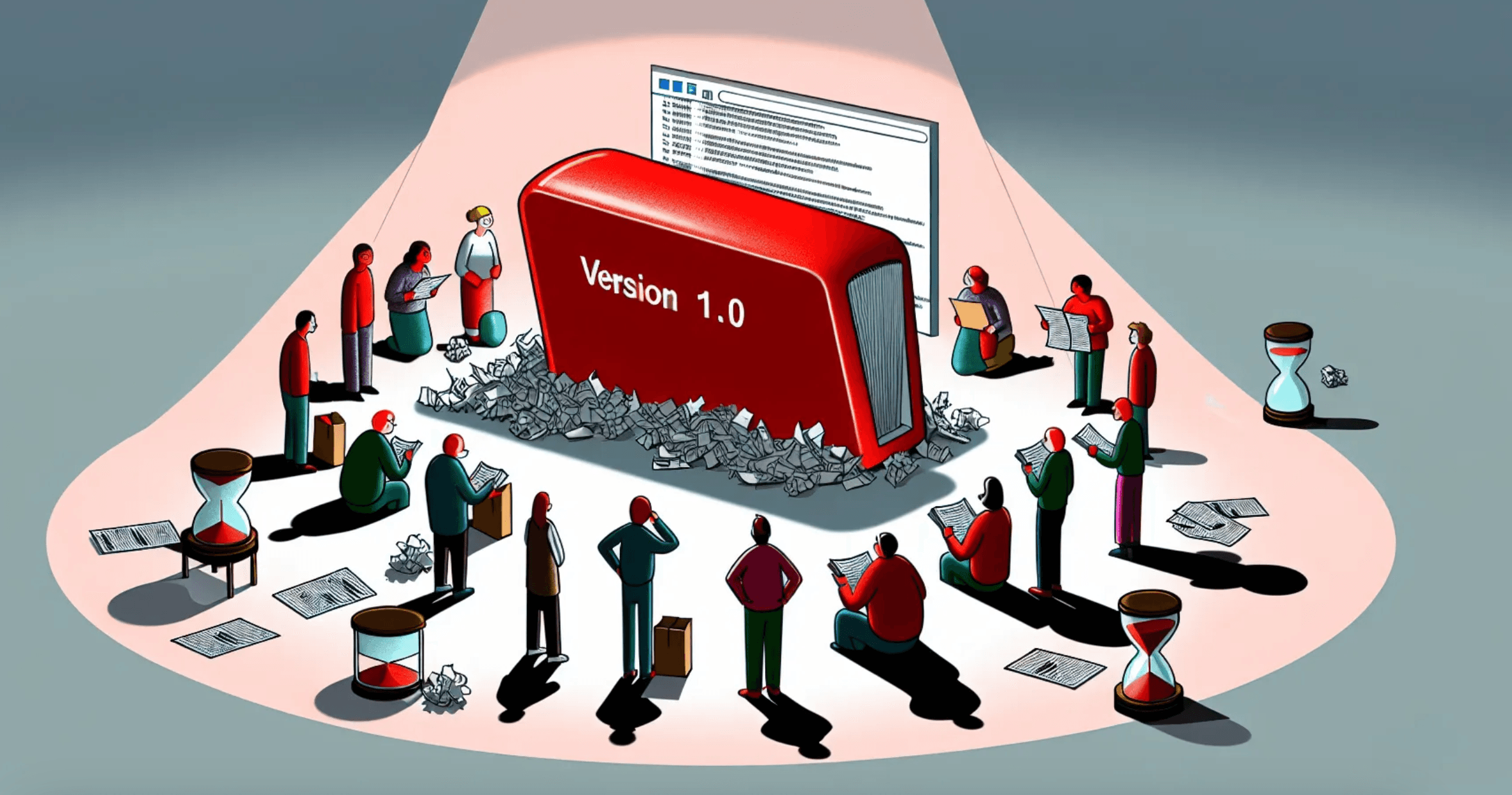Why Testing a Version 1 Product is Often Inefficient and Counterproductive
Why Testing a Version 1 Product is Often Inefficient and Counterproductive.

Unpopular Opinion: Why Unit and Feature Testing a V1 Product is a Waste of Time
Hook: Is Writing Tests for Your MVP Slowing You Down?
If you’re a developer, brace yourself—this might sting. I believe that writing unit and feature tests for a version 1 (V1) product is a waste of time and effort. Yes, I know this goes against the grain of what we’ve been taught, but hear me out.
Introduction
Anyone who knows me knows I'm an avid fan of the Minimum Viable Product (MVP) approach to building technology. There's a pervasive belief in the development world that all code must be perfect from day one, which often translates into rigorous unit and feature testing. But here's my controversial take: V1 products don’t need these tests. In fact, it’s almost impossible to create an MVP with proper tests in place.
Let’s break down why this is the case.
Frequent Changes
In the early stages, your product will undergo constant changes based on user feedback and market needs. Writing tests for an ever-evolving codebase means you'll spend more time updating those tests than actually developing new features or fixing bugs.
- Example: Imagine you’re working on a social media app. With every piece of feedback you get from beta users, you’ll likely make changes to core functionalities like posting or commenting. Updating tests at each step becomes an endless cycle.
- Statistic: According to CB Insights, 42% of startups fail because there’s no market need for their product.
Resource Constraints
Startups and new projects often have limited resources—both in terms of time and money. The effort spent on writing exhaustive tests can be better used developing core features or gathering critical user feedback.
- Example: If you're bootstrapping your startup with just two developers, would you rather have them spend hours writing tests or building essential features that could attract early users?
- Statistic: A survey by TechCrunch revealed that 70% of startups scale prematurely due to misallocated resources.
Uncertain Requirements
The requirements for a V1 product are often not well-defined or subject to change as new insights are gained from real-world usage. Tests written under these conditions can quickly become obsolete, leading to wasted effort.
- Example: Your team decides on adding a new feature based on initial assumptions but later finds out through user feedback that it needs significant alterations.
- Statistic: According to McKinsey & Company, only 17% of IT projects can be considered truly successful regarding meeting requirements within budget and timeframe constraints.
Speed to Market
Getting an MVP out quickly is crucial; timing can make or break your venture. Writing and maintaining comprehensive test suites can slow down this process significantly, delaying your release and potentially causing you to miss valuable market opportunities.
- Example: If you're launching during holiday season shopping sprees but spend too much time testing instead of releasing your MVP promptly.
- Statistic: Nearly 30% of startups fail due to poor timing according to research by CB Insights.
Learning and Iteration
The first version serves as a learning phase—it’s about understanding user needs better before making informed decisions about future iterations. Investing heavily in testing before gaining real-world insights leads inevitably towards misallocated resources when pivoting becomes necessary later down the line anyway!
- Example: Think about how many times Instagram pivoted its business model before becoming what it is today.
- Statistic: Clayton Christensen from Harvard Business School states nearly 30k new products introduced annually fail at rates around 95%.
Developers Often Write Redundant Tests
Developers often get caught up writing redundant unit/feature-level checks such as verifying if users insert correctly into databases—a task practically assured already!
Don’t get me wrong; I appreciate unit/feature-level checks forcing devs towards cleaner separation concerns/building testable actionable codebases overall! However,the opportunity cost outweighs benefits concerning initial versions where priorities should lie elsewhere instead...
Conclusion:
To sum up,
- Constant changes demand adaptability over rigidness
- Limited resources require prioritisation over perfectionism
- Unclear evolving requirements render preemptive measures futile
- Speed-to-market trumps exhaustive validation initially
- Real-world learning drives iterative improvements better than prescribed methodologies prematurely applied 6 )Redundancy wastes precious developer bandwidth unnecessarily early-on
So why allocate valuable time/resources ensuring perfect implementations initially without guarantees beyond mere speculation anyhow?
Take heed fellow developers – sometimes less indeed proves far more effective ultimately!
